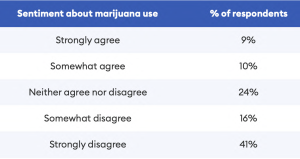
Here’s 5 tips to help your clients prepare for potential recession
1. Consider securing a line of credit before they need it
2. Continue to invest in expansion
3. Lock in low-rate loans while available
4. Refinance debt they may already have
5. Get a Business Credit Card
Full Story: Nav Small Business Blog
HONORS
Congratulations NAHU’s Person of the Year John Word!
NAHU/NABIP honored John Word, III and Michael Gray with their highest honor, the Harold R. Gordon Memorial Award at the organization’s 92nd Annual Convention in Austin, Texas. Read press release.
“John is a visionary and a transformative leader. He has spearheaded countless positive changes within the industry that have benefited agents and brokers and the consumers they serve. John is never complacent – he has an unrelenting drive to better his community and his industry. His efforts have left us all better off,” said Janet Trautwein, CEO of NAHU.
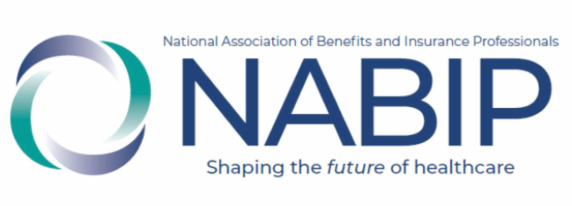 NAHU Changes Name to NABIP
NAHU Changes Name to NABIP
On June 28, at the 2022 Annual Convention, the NAHU House of Delegates voted to approve a name change to better reflect the purpose of the organization: National Association of Benefits and Insurance Professionals. This change took place at the 2022 Annual Convention. The new name was chosen from 30 possibilities after receiving input from national, state and local leaders across the country.
MENTAL HEALTH
Do you have clients with Kaiser? Keep them mentally vibrant!
Make sure they take advantage of Kaiser’s investment in mental wellness with a series of digital self-help apps and other programs finger-tip accessible. Your Kaiser clients can reach for CALM, myStrength, Ginger and more. Features: 1-on-1 emotional support by text — available 24/7. No referral is required for mental health and addiction care services. More info here.
LEGISLATION
Good News for Your Rural Clients! Rural Communities Access to ER Services Expanded
Biden-Harris Administration takes action with CMS with new rule that creates a pathway for rural hospitals and critical access hospitals to increase access to emergency and outpatient care
The proposed rule will allow small rural hospitals to seek this new health care provider designation and provide continued access to emergency services, observation care, and additional medical and outpatient services. This is a significant step in building on the Administration’s efforts to reduce health care disparities and maintain access to services in rural communities.
To read the Fact Sheet on HHS actions to strengthen rural health, click here: https://www.hhs.gov/sites/default/files/rural-health-fact-sheet.pdf
VIRTUAL CARE
Care on the go! Looks like its the key to better, more equitable health outcomes
Now that we’ve accepted virtual doctors’ visits, are we getting better care? Your clients should know employees are more than embracing the change — they’re asking for help sooner. So make sure benefits ride the wave and integrate virtual care options. Research shows as technology continues to drive change in healthcare, it may create a path to better access. Learn more.
Teledoc Growth Shows Growing Popularity of Remote Care
Brokers can encourage clients to include virtual care with confidence, even in bear market. Teladoc saw massive growth in 2020, boosted by the surge in telehealth during the COVID-19 pandemic. But the company’s stock has plummeted this year amid a tumultous bear market and management walked back 2022 revenue projections due to challenges with its mental health and chronic care businesses. CEO Jason Gorevic said he’s confident in Teladoc’s long-term growth as the 20-year-old company has the “scale, capabilities and depth of expertise” to win in the market.
BENEFITS
Eye-Popping Study Results — Interest in Vision Benefits on the Rise
Findings from Versant Health’s 3rd Annual Vision study show consumer opinions of the value of vision care as part of whole-body health are climbing, with tech-enabled care playing a pivotal role in benefits decisions. Read more.
The Boomers Are Coming! Are Health Plans Prepared?
As Baby Boomers are set to catapult Medicare enrollment to over 80 million beneficiaries by 2030, they will also reshape traditional post-acute care models. Learn how health plans can begin to establish collaborative post-acute networks to prepare for this impending influx. Download Report.
BE READY! How do clients want to pay? Access benefits? Practice self-care?
Trends in Social Media Reveal Client Behavior Changes
Insurance agents and financial advisors are wise to prepare for rapidly changing client behaviors. By queuing into the next generation of social media marketing, savvy companies must stay aware of trends and tweak their social media strategies at least monthly to stay current. This from technology strategist and futurist Crystal Washington at the 2022 Annual Meeting of the Million Dollar Round Table. Full Story: InsuranceNewsNet Magazine
Good News from Pandemic Front: More Kids Have Coverage
Warning: progress could stall with expiration of protections
Urban Institute data shows that the annual rate of U.S. children without health insurance decreased from around 5% in 2019 to around 4% in 2021, which means there were about 700,000 fewer uninsured children during the period. The report also notes that the number could rise again if federal and state governments do not act to keep enhanced marketplace subsidies in place and limit coverage losses.Full Story: FierceHealthcare
HEALTHCARE COSTS
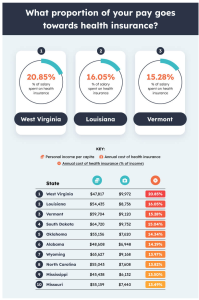
WHoA! Health insurance absorbs third-highest share of annual income
Health insurance absorbed the third-highest share of an average annual income of $60,657.90, according to a study from NiceRx, following only rent and childcare. The study found health insurance took up 10.69% or $6,487.20 of the average annual income. Health insurers extended grace periods and offered premium credits during the coronavirus pandemic, but the “new normal” has ushered in a return to high costs and high healthcare spending. Full Story: Health Payer Intelligence
LIFE INSURANCE
Have you been smokin’?
Most Americans Against Credit, Crime And Marijuana Use In Life Insurance Rates
Americans say: Getting high on weed should not make you have to pay more for life insurance. Or having poor credit, or a felony. A new Forbes Advisor survey found that respondents were less forgiving of risky drivers and those with dangerous hobbies, such as skydiving. In addition to age, gender and health, life insurance companies regularly use driving records, criminal records, credit, dangerous hobbies and marijuana use when setting rates or deciding whether to even offer coverage. The survey of 2,000 adults gauged opinions about insurers’ practices.
Here’s a look at what Americans think about lifestyle factors that influence how much life insurance costs. “Strongly agree” shows how many respondents feel the behavior should affect the price of life insurance.
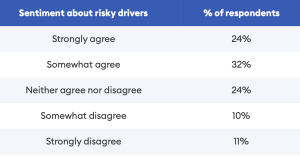
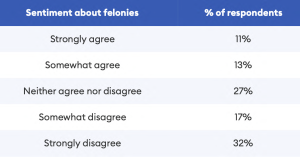
HEALTH INEQUITIES
Black Children Slighted in ER settings
Racial inequity in imaging rates seen among pediatric ED
Sad but not surprising news. Thirty eight children’s hospitals were studied, including more than 12 million pediatric emergency department visits. Profoundly, disparities in diagnostic imaging for kids presenting to emergency departments were uncovered. Researchers highlighted in JAMA Network Open that non-Hispanic Black children were consistently less likely to undergo imaging tests during ED visits compared to non-Hispanic white children. What did that mean for the health of these children and their families?
These data add to the growing literature demonstrating variability in health care provision, resource utilization and quality of care associated with patient race and ethnicity for both adults and children. Full Story: HealthDay News
Deloitte: Health inequities cost industry $320B per year, signal unsustainable crisis
Inequities in the U.S. health system cost approximately $320 billion annually and could surpass $1 trillion in annual spending by 2040 if left unaddressed, according to a new analysis. Read more
KHN: California May Require Labels On Pot Products To Warn Of Mental Health Risks
Many scientific studies have linked marijuana use to an increased risk of developing psychiatric disorders, including schizophrenia. The risk is more than four times as great for people who use high-potency marijuana daily than for those who have never used, according to a study published in The Lancet Psychiatry in 2019. One study found eliminating marijuana use in adolescents could reduce global rates of schizophrenia by 10%.
EVENTS
- Principal® Small Business Connect: Balancing flexibility in the workplace. July 12, 2022, 11 a.m. – 12 p.m. CST/ 9 a.m. – 10 a.m. PST. Register
- CAHIP Engage, Statewide Leadership Conference, July 18-19, Universal City, Calif. Register.
- NABIP/NAHU Webinar “Litigation Happens! Learn From it and Prevent Compliance Errors” on Thursday, July 21, at 1 p.m. ET presented by Carla Adams, Director of Benefit Services at isolved. Register
- NAIFA “Income Protection for Californians” Thursday July 28, 2022 11:30 a.m. – 1:30 p.m. PST by Zoom presented by Gerald M. Kouzmanoff CLU, ChFC, president of Kouzmanoff Financial & Insurance Services. Register
- Modern Healthcare Events
- Social Determinants of Health Symposium – Thursday, August 11, 2022 . Info
- The Hospital of the Future Virtual Briefing – Thursday, September 08, 2022. Info
- The Virtual Health Virtual Briefing – Thursday, October 13, 2022. Info
- IEAHU, OCAHU & SDAHU Senior Summit, Aug 23-25, Pechanga resort and casino, Temecula, Calif. Register. More info here.

